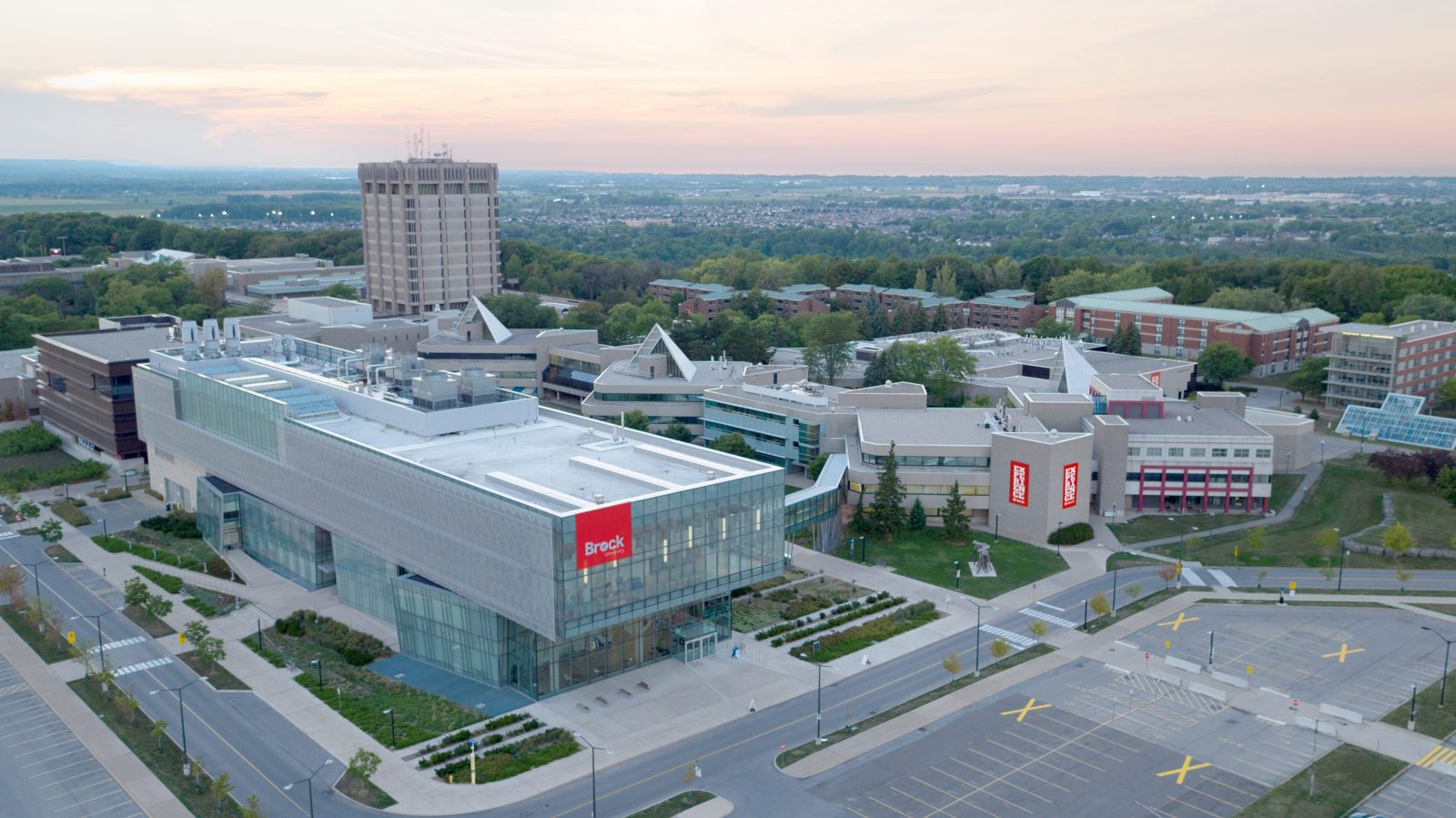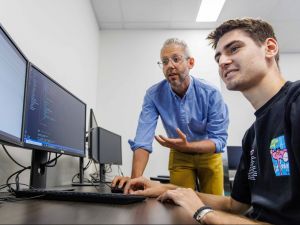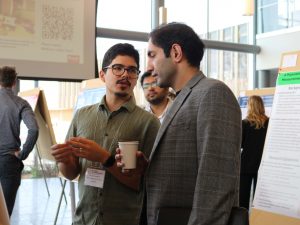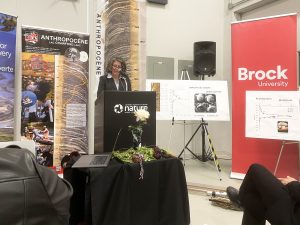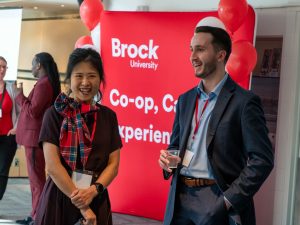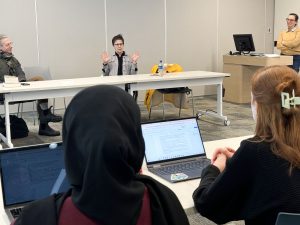How does temperature affect the development of carpenter bees? Jesse Maretzki is aiming to find out during his summer research project.
The fourth-year Biological Sciences student will be placing carpenter bee larvae in small, temperature-controlled chambers of a repurposed lab instrument — nicknamed the “Bee-PCR machine” — and monitoring the stages of their growth.
“We want to be able to graph a trend to see what the ideal temperature is for their growth, and if there is a cut-off point where they will not develop or if they develop particularly quickly,” says Maretzki, who will be working under the direction of Biological Sciences Professors Miriam Richards and Glenn Tattersall.
The research, he adds, could give insights into climate change impacts.

Fourth-year Biological Sciences student Jesse Maretzki is one of 23 students to be awarded summer research funding from the Natural Sciences and Engineering Research Council of Canada’s Undergraduate Student Research Awards program.
Maretzki is one of 23 Brock students who received research funding from the Natural Sciences and Engineering Research Council of Canada’s (NSERC) Undergraduate Student Research Awards (USRA) program.
The award, valued at $6,000 for a full 16-week period, is meant to develop undergraduate students’ interest in natural sciences and engineering careers, and encourage them to pursue graduate studies in these fields.
Also among the recipients is fourth-year Computer Science student James Sargant, who knew he wanted to pursue a master’s degree in the fall, but wasn’t sure about the specific focus of his research.
With his summer research project, “Epidemic Modelling using Computational Intelligence,” Sargant says he now has a clearer idea of the direction he wants his future research to take.
“The summer could potentially direct the flow of my master’s research, depending on what we learn from the summer and where I could branch off to incorporate my research in the next couple of years,” he says.
“The USRA program is an excellent opportunity for seasoned scholars to pass along knowledge, skills and support to student researchers,” says Vice-President, Research Tim Kenyon. “This mentorship fosters curiosity and gives students valuable professional experience that can launch them into a research career.”
Computer Science Professor Sheridan Houghten, who is supervising Sargant, says she is looking forward to the summer research.
“I place a high value on the NSERC USRA program because of the research experience it affords undergraduates, allowing them to obtain skills that are very valuable for future graduate studies or in the workplace,” she says.
“Many students have publications as a result of this program as well,” she adds.
Recipients of the 2021 NSERC USRA grants are:
- Emma-Kate Baker, “Synthesis of bola-lipids as substrates for lipid kinases,” Faculty of Mathematics and Science
- Reid Ciolfi, “Analytical and Topological Methods in Optimization and Applications to Radiotherapy Proto,” Faculty of Mathematics and Science
- Bryn Crandles, “Statistical Analysis of Electroencephalogram Data,” Faculty of Mathematics and Science
- Emily Erb, “The impact of verbal and visual reminders on children’s prospective memory,” Faculty of Social Sciences
- Rebekah Feld, “Polyphenols and Bone Metabolism,” Faculty of Applied Health Sciences
- Karl Grantham, “Artificial Intelligence Automated Small Molecular Drug Discovery and Side-Effect Predictions,” Faculty of Mathematics and Science
- Teddy Greene, “Mechanistic role of TAK1 mast cell virus detection,” Faculty of Applied Health Sciences
- Ishan Herath, “Analysis of germline and somatic variants in rhesus monkeys,” Faculty of Mathematics and Science
- Sara Hesse, “Solitons of negative flows,” Faculty of Mathematics and Science
- Sophie Johnston, “Optimizing Top-down Proteomics Using an Alternate Gel Matrix,” Faculty of Applied Health Sciences
- Steven Kottaras, “Resting Concentrations of Bone Biochemical Markers in Adolescent Female Athletes,” Faculty of Applied Health Sciences
- Joshua Labrie, “Stratigraphy of Interior Layered Deposits in Valles Marineris, Mars,” Faculty of Mathematics and Science
- Samantha Langdon, “Training Artificial Neural Networks using Swarm Intelligence,” Faculty of Mathematics and Science
- Jesse Maretzki, “Using a Bee-PCR machine to study thermal effects on developing bees,” Faculty of Mathematics and Science
- Ahmad Mohammad, “Examination of BDNF on amyloid precursor protein processing,” Faculty of Applied Health Sciences
- Maryam Mojahid, “Metarhizium effector proteins,” Faculty of Mathematics and Science
- Kiran Randhawa, “Age differences in voluntary and involuntary retrieval,” Faculty of Social Sciences
- Jisook Ryoo, “Investigating the effects of genetic Ng reduction on diet-induced obesity and muscle fibre type,” Faculty of Applied Health Sciences
- Ishaan Sachdeva, “Roles of Z-DNA in Halobacterium salinarum,” Faculty of Mathematics and Science
- James Sargant, “Epidemic Modelling using Computational Intelligence,” Faculty of Mathematics and Science
- Vincent Stabile, “Does the Ability to Match Identity in Unfamiliar Faces Predict Face Learning?” Faculty of Social Sciences
- Connor Wilson, “Symmetry Reduction of Fluid Flow Equations,” Faculty of Mathematics and Science
- Justin Wimmer, “The role of retinoids in memory reconsolidation,” Faculty of Mathematics and Science
